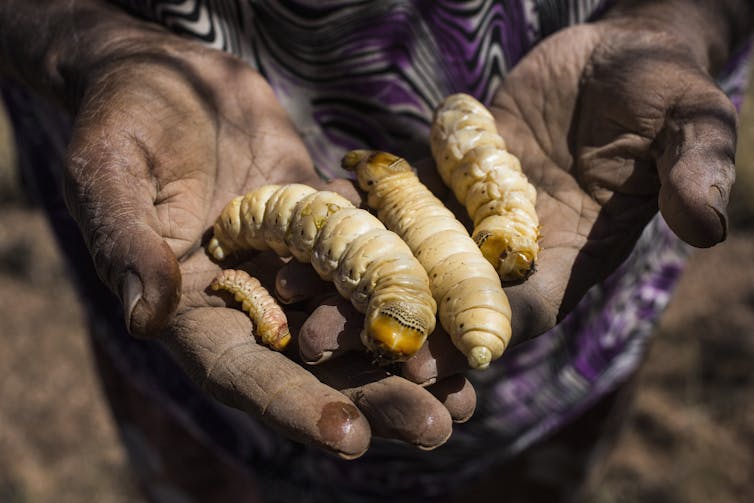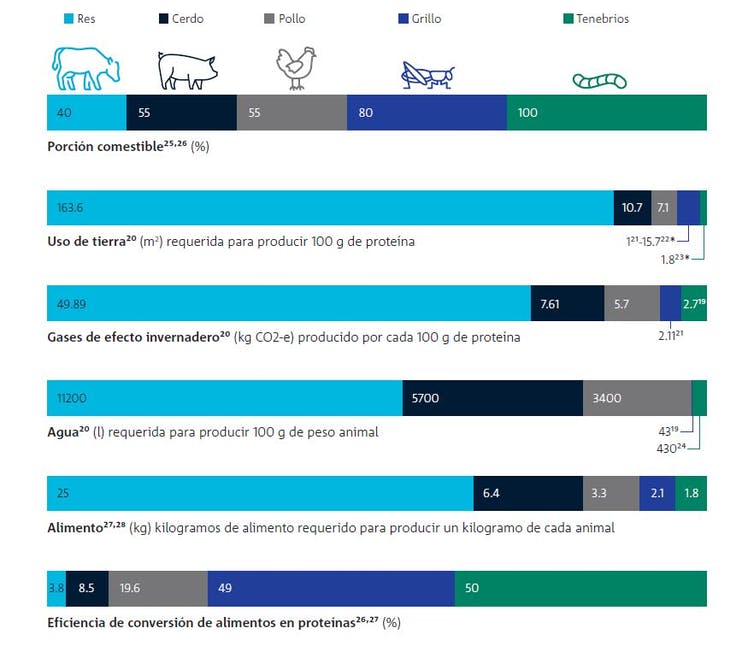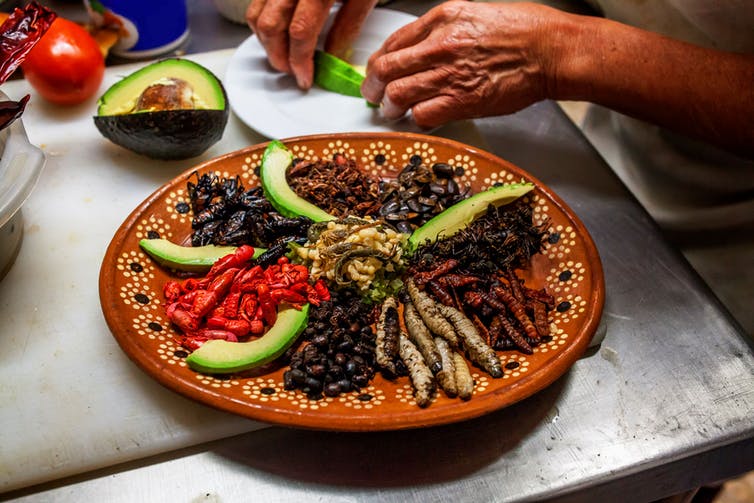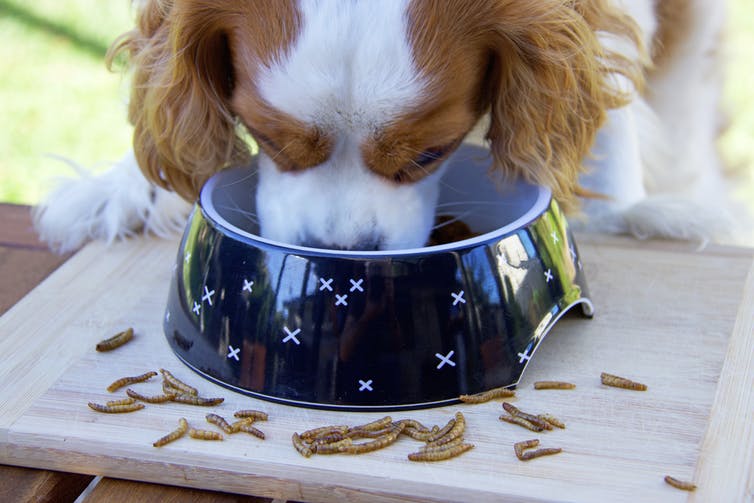June
4, 2021
6 min read
This story originally appeared on The Conversation
By Bryan Lessard , CSIRO and Rocio Ponce-Reyes , CSIRO
With the world’s population projected to reach 9.7 billion by 2050 , one of the greatest challenges of our time is ensuring that there is enough food for everyone.
The lands and waters for cultivation are limited. Additionally, climate change, harmful environmental practices, and emerging diseases threaten supply chains.
One way to deal with this crisis is by turning to our insect friends. Don’t resist: more than two billion people in 130 countries already consume insects . In Australia, for example, many already consume natural red food coloring made from mealybug, or peanut butter, which can legally contain up to 5% insect fragments .
We want to present insects as an option to be included in the diet, presenting the new CSIRO study Edible insects: strategies for the growth of an emerging Australian industry . In it, we outlined a strategic plan that explores the challenges and opportunities for Australia to participate in the global market for edible insects, which is expected to be worth A $ 1.4 billion by 2023 .
Our report provides a useful framework for anyone interested in getting a slice of the cricket pie, including insect processing startups, farmers, food producers, researchers, policy makers, and native peoples businesses. To take advantage of the agricultural potential of indigenous insect species, we must create lines of collaboration, encourage the co-development of initiatives by members of native peoples, and conduct more research.
[embedded content]CSIRO presents the first strategic plan on edible insects
If we are more courageous when choosing our food and incorporating insects into our diet, we can reduce our environmental footprint, improve our health and be more connected to the land and culture. We are convinced that you, your friends and your pets will enjoy it in a big way.
Here are four reasons why we should eat more insects, quite a challenge:
1. A long tradition of consuming insects
The urge to eat insects is growing. A 2006 study found that 20% of Australians surveyed would be willing to eat a ‘witjuti larva’.
After all, native Australians have eaten insects for tens of thousands of years, indigenous species like those witjuti larvae , which taste like scrambled eggs with a hint of walnut; or bogong moths , which have a peanut butter taste, and green tree ants , with an acidic, lemon-like taste.
These are just a few of the 60 indigenous species of edible insects recorded in Australia.

Edible insects are celebrated and traditionally consumed by members of the native peoples of Australia. Getty Images
2. Insects could help improve our health
Edible insects, in addition to being tasty, are very nutritious : they are a source of high-quality protein and other nutrients, such as omega-3 fatty acids, iron, zinc, and vitamins B12, C and E.
Recent studies have shown that consuming some insects – such as silkworms, wax moth caterpillars, and tenebrium larvae, mealworms – could improve intestinal health , blood pressure, and lower blood glucose levels. .

Edible insects are rich in proteins, vitamins and other micronutrients that could improve our health. B. Ceko & B. Lessard
More studies are needed to identify species and determine the nutritional value of each of them , in order to be able to choose which ones to consume and maximize the health benefits.
Attention, people with shellfish allergies: Edible insects are related to crustaceans and could cause similar allergic reactions.
3. There are already products with insects
Although they might seem like foods of the future, products made with edible insects are already available in some supermarkets.
New companies and insect producers belonging to the Insect Protein Association of Australia are cultivating insects and turning them into new edible products. We can even get the advice of nutritionists who specialize in edible insects.
Pets love to enjoy delicious and sustainable food made from edible insects. Bryan Lessard, Author provided
If you’re curious, why not try some delicious peanut butter with smoked crickets? Other suggestions might include nachos made with corn chips enriched with cricket powder, or perhaps spaghetti with cricket powder pasta. Maybe a little gin infused with green tree ants will help you steel yourself.
And if you’re feeling very adventurous, you can take your culinary qualities to the next level by baking your own muffins, breads, or bases with high-protein cricket powder.
And for your puppy? Try feeding him sustainable pet products made from black soldier flies or tenebrios.
4. Growing insects benefits the environment
When compared to conventional farm animals such as cows, pigs and chickens, insects produce fewer greenhouse gases , as they do not defecate as much and generally do not ferment food in their guts producing methane (only cockroaches and termites produce methane this way).
Furthermore, only a very small part of the insect is wasted, since between 80 and 100% of the animal is consumed. Even insect waste (or droppings) can be turned into nutrient-rich fertilizers for the garden .

Insects need little space, water, and food to produce large amounts of high-quality protein.
But in addition, insect farmers are also reducing the transport-related carbon footprint by developing urban mini-farms for insects, thereby producing sustainable proteins close to the consumer. Perhaps one day insects can be useful to farmers, supplementing the diet of their animals in times of drought. 

In Mexico, a great variety of edible insects are consumed, such as Chicatan ants, maguey worms, jumiles, escamoles and chinicuiles.
This article is republished from The Conversation under a Creative Commons license. Read the original article .






